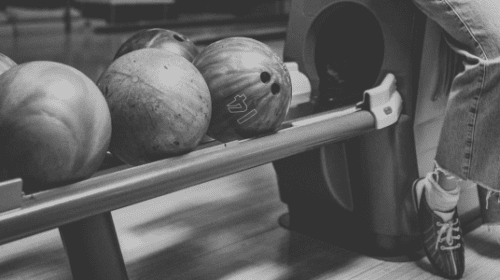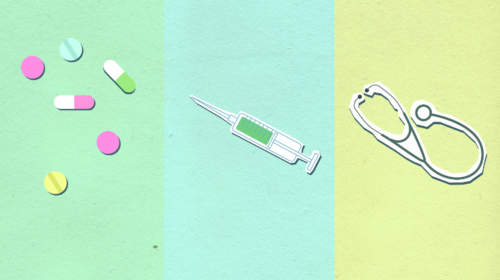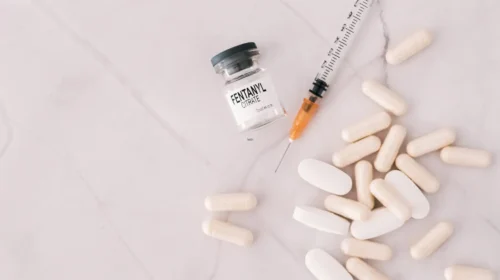Key Points:
- The socioeconomic realities of reservation life for Native Americans are associated with higher rates of substance abuse.
- Substance abuse is a serious problem in Native American communities.
- Reservation substance abuse puts Native Americans at a heightened risk for adverse health outcomes.
- The family networks and parenting beliefs of Native American cultural identity can be utilized in drug abuse treatment to promote lasting recovery.
Who We Mean When We Say “Native Americans”
Native Americans are the original indigenous people that inhabited the area which would later become the United States. In the United States, the Native American people comprise 566 federally recognized American Indian (AI) and Alaska Native (AN) tribes, with around 5.2 million people identifying as “Native American” during the last census in 2020.[1]
While it’s true that the Vikings were some of the first Europeans to explore the continent of North America, there were already millions of people living on the land that is now considered the U.S. The colonists made land treaties with the Native Americans on the East Coast, which they nearly uniformly disregarded.
Between 1830 and 1850, the federal government instigated a brutal and tragic relocation order in which thousands of Native Americans from five tribes were forcibly removed from the southeast and resettled west of the Mississippi River onto semi-sovereign government-owned land called “reservations.” Many of their descendants still live there today.
Substance Abuse in Native American Communities
Native American drug use history predates the colonists arriving in North America. This group of indigenous people used drugs such as tobacco and weak alcoholic brews made from fermented maize for ceremonial purposes. Europeans offered the Native Americans their stronger alcoholic brews in return for valuables like pelts and beads, which could be traded back to the Old World.[2]
Europeans modeled inappropriate and excessive behavior while intoxicated. They frequently introduced alcohol during trading sessions and used its inebriating properties to their advantage.[3]
Some health professionals theorize that as some of the only times the Native American traders witnessed alcohol consumption was in an irresponsible fashion coupled with inappropriate behavior, this could have sparked a tradition of heavy alcohol use. They believe it’s possible that this could have possibly influenced the systemic, generational alcohol abuse prevalent in indigenous communities today.[4]
Native American Substance Abuse Statistics
Today, Native American reservations report cyclical and structural substance abuse problems co-exacerbated by bleak economic conditions:
- Some tribes claim unemployment rates as high as 85%.[5]
- Law enforcement is chronically underfunded.
- In the poorest tribes, only 1 in 3 men has year-round employment.[6]
- 1 in 4 Native Americans live in poverty.[7]
- Long distances must be traveled off the reservation to receive quality healthcare.
- 11.2% of Native Americans 12 and older have Alcohol-Use Disorder in 2022 [8]
Some recent findings from the 2019 National Survey on Drug Use and Health showed the following substance abuse statistics in the Native American community:[9]
- 10.2% of adult Native Americans had a substance use disorder (SUD).
- 12.9% of Native American 18 to 25-year-olds and 5.7% of 26+-year-olds have alcohol use disorder.
- Twice as many Native Americans abuse methamphetamine (1.9%) as does the US general population (0.9%)[10].
- Twice as many Native American 18 to 25-year-olds (4.7%) and three times as many 26 to 49-year-olds (6.9%) have co-occurring substance use and mental disorders than the general US population (2.3%)[11].
Risk Factors for Native American Substance Abuse
Compared to the general population, Native American communities possibly have an increased risk for substance abuse due to the increased existence of:[12]
- Sexual assault
- Rape
- Poverty
- Inadequate healthcare
- Anxiety
- Discrimination
- Racism
Native Americans may also be at increased risk of developing chronic health issues that could harm overall wellness [13]
- Asthma
- Obesity
- Cancer
- Sexually-Transmitted Diseases (HIV/AIDS)
- Chronic Liver Disease (alcoholism)
- Diabetes
- Stroke
- Post-Traumatic Stress Disorder (historical trauma, sexual trauma, etc.)
- Anxiety
- Alcohol Use Disorder
- Infant Mortality
- Suicidal Thoughts
Resources For Native American Communities With Substance Abuse Disorder
In today’s landscape, the unacceptable healthcare and resource access gap between Native American communities and other U.S. populations has been well documented. It is unnecessary for anyone not part of their culture to say that problems exist in their own community. Compassion and practical support are what is needed most in any community.
Interventions for substance abuse must draw on the unique experiences of identifying as a Native American. While each of the 566 federally recognized tribes is unique in its own way, two key resources are common across all tribes: Family networks and parenting beliefs.[14]
Family Networks
In Native American-descended society, extended families are organized around reciprocity, affection, and obligation to care for each other.[15] Family extends beyond blood relatives to include people who are important to the emotional and relational health of the family.
This circle is informally adopted and acknowledged as part of the family by the wider community. Thus, a Native American child may have multiple sets of grandparents, aunts, uncles, cousins, brothers, and sisters who see they are successfully integrated into the family network.
This could have positive implications for the family programming component of treatment, an intervention that normally involves only members of one’s immediate blood family. In a Native American setting, this “family” could involve a much wider circle of influence. This could ensure a wider circle of sobriety support and a greater chance of reintegrating into the family network.
Parenting Beliefs
Native American cultures promote learning through experience, listening, and observing their surroundings. It’s an observational pedagogy rather than a teacher-directed pedagogy.[16]
Whereas the paternal figure has an outsized influence on child development within many global cultures, emerging research has shown that the opposite is true in families of Native American descent. As the maternal figure or matriarch embodies her cultural identity, this significantly correlates to the child’s healthy social-emotional development.[17][18]
Health professionals theorize that focusing on the relationship between mother and child might be key to understanding any toxic dynamics that may exist in families confronting substance abuse.
Find Treatment Near You
The Indian Health Service a division of the Department of Health and Human Services, has a plethora of valuable and culturally relevant resources available.[19] They can help community members find treatment centers near them that can be culturally responsive and proactive.
Recovery Unplugged recognizes the stigmatizing barriers that Native Americans face when accessing addiction treatment and other types of lifesaving care.
We remain committed to increasing accessibility to treatment and providing culturally competent, supportive, and intuitive care. If you are Native American and need help, or someone you care about is Native American and needs help, call Recovery Unplugged now.

























